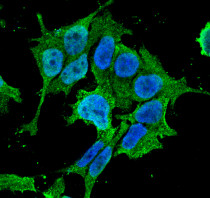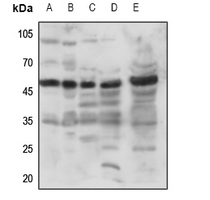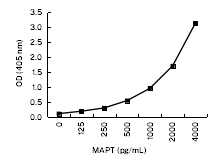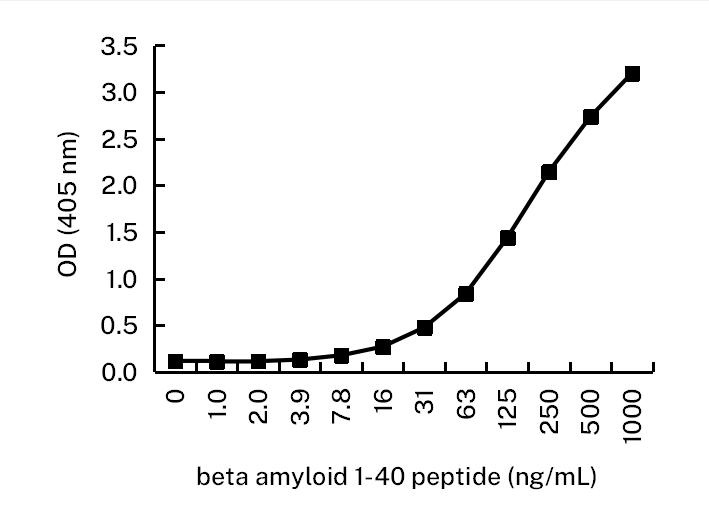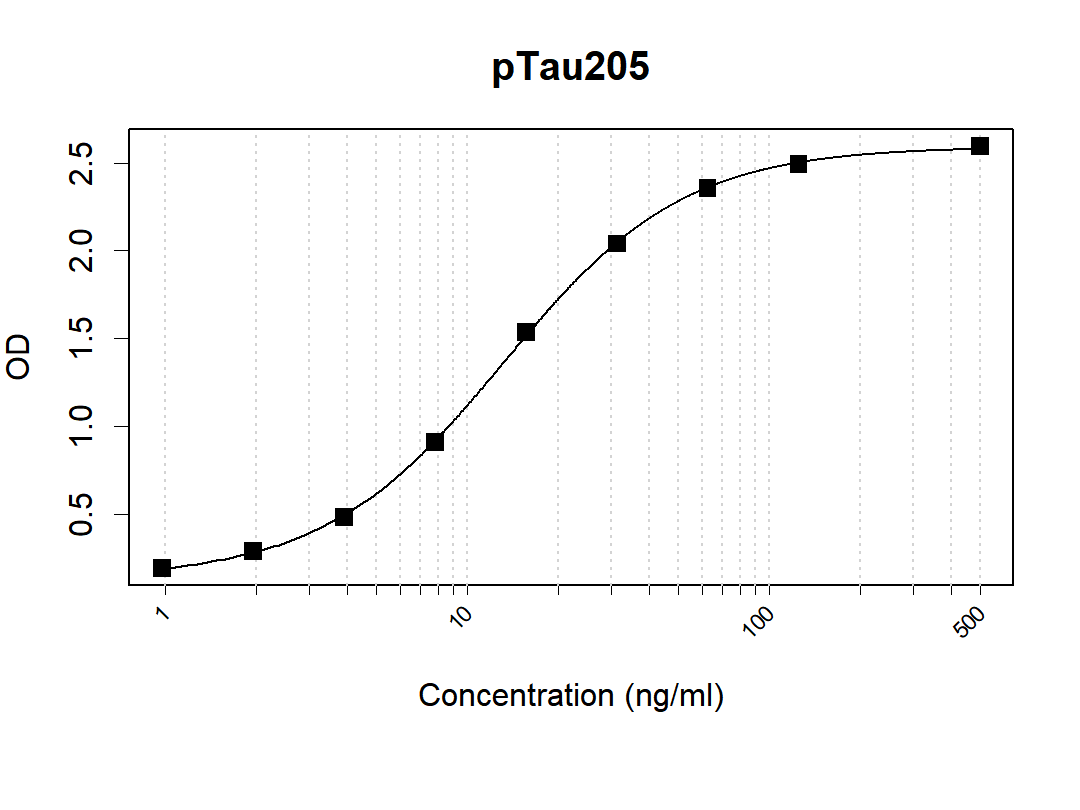anti-ASIC1 antibody [S271-44]
CAT.NO. : ARG22245
US$ Please choose
US$ Please choose
Size:
Trail, Bulk size or Custom requests Please contact us
*产品价格可能会有所调整,请以品牌方官网实时更新的价格为准,以确保准确性。
概述
| 产品描述 | Mouse Monoclonal antibody [S271-44] recognizes ASIC1 |
|---|---|
| 反应物种 | Ms, Rat |
| 应用 | ICC/IF, IHC, WB |
| 特异性 | Detects ~60kDa. |
| 宿主 | Mouse |
| 克隆 | Monoclonal |
| 克隆号 | S271-44 |
| 同位型 | IgG1 |
| 靶点名称 | ASIC1 |
| 抗原物种 | Mouse |
| 抗原 | Fusion protein amino acids 460-526 (Cytoplasmic C-terminus) of Mouse ASIC1 |
| 偶联标记 | Un-conjugated |
| 別名 | ACCN2; ASIC; Amiloride-sensitive cation channel 2, neuronal; ASIC1; BNaC2; Acid-sensing ion channel 1; Brain sodium channel 2 |
应用说明
| 应用建议 |
| ||||||||
|---|---|---|---|---|---|---|---|---|---|
| 应用说明 | * The dilutions indicate recommended starting dilutions and the optimal dilutions or concentrations should be determined by the scientist. |
属性
| 形式 | Liquid |
|---|---|
| 纯化 | Purification with Protein G. |
| 缓冲液 | PBS (pH 7.4), 0.09% Sodium azide and 50% Glycerol |
| 抗菌剂 | 0.09% Sodium azide |
| 稳定剂 | 50% Glycerol |
| 浓度 | 1 mg/ml |
| 存放说明 | For continuous use, store undiluted antibody at 2-8°C for up to a week. For long-term storage, aliquot and store at -20°C. Storage in frost free freezers is not recommended. Avoid repeated freeze/thaw cycles. Suggest spin the vial prior to opening. The antibody solution should be gently mixed before use. |
| 注意事项 | For laboratory research only, not for drug, diagnostic or other use. |
生物信息
| 数据库连接 | |
|---|---|
| 基因名称 | Asic1 |
| 全名 | acid-sensing (proton-gated) ion channel 1 |
| 背景介绍 | This gene encodes a member of the acid-sensing ion channel (ASIC) family of proteins, which are part of the degenerin/epithelial sodium channel (DEG/ENaC) superfamily. Members of the ASIC family are sensitive to amiloride and function in neurotransmission. The encoded proteins function in learning, pain transduction, touch sensation, and development of memory and fear. Alternatively spliced transcript variants have been described. [provided by RefSeq, Feb 2012] |
| 生物功能 | Isoform 2 and isoform 3 function as proton-gated sodium channels; they are activated by a drop of the extracellular pH and then become rapidly desensitized. The channel generates a biphasic current with a fast inactivating and a slow sustained phase. Has high selectivity for sodium ions and can also transport lithium ions with high efficiency. Isoform 2 can also transport potassium, but with lower efficiency. It is nearly impermeable to the larger rubidium and cesium ions. Isoform 3 can also transport calcium ions. Mediates glutamate-independent Ca(2+) entry into neurons upon acidosis. This Ca(2+) overloading is toxic for cortical neurons and may be in part responsible for ischemic brain injury. Heteromeric channel assembly seems to modulate channel properties. Functions as a postsynaptic proton receptor that influences intracellular Ca(2+) concentration and calmodulin-dependent protein kinase II phosphorylation and thereby the density of dendritic spines. Modulates activity in the circuits underlying innate fear. Isoform 1 does not display proton-gated cation channel activity. [UniProt] |
| 细胞定位 | Cell membrane |
| 预测分子量 | 60 kDa |
| 翻译后修饰 | Phosphorylation by PKA regulates interaction with PRKCABP and subcellular location. Phosphorylation by PKC may regulate the channel. |
检测图片 (2)
ARG22245 anti-ASIC1 antibody [S271-44] ICC/IF image
Immunofluorescence: Human Neuroblastoma cell line SK-N-BE. Fixation: 4% Formaldehyde for 15 min at RT. Primary Antibody: ARG22245 anti-ASIC1 antibody [S271-44] at 1:100 for 60 min at RT. Secondary Antibody: Goat anti-Mouse ATTO 488 at 1:100 for 60 min at RT. DAPI (blue) nuclear stain.
ARG22245 anti-ASIC1 antibody [S271-44] WB image
Western blot: 1) MW ladder, and 20 µg of Rat brain lysates stained with ARG22245 anti-ASIC1 antibody [S271-44] (60 min, RT) at 2) 1:100, 3) 1:250, 4) 1:500, 5) 1:1000 dilutions. Block: 5% milk + TBST 1hr at RT.
 New Products
New Products




![anti-ASIC1 antibody [S271-44]](/upload/image/products/ARG22245_1_210_205.jpg)
![anti-ASIC1 antibody [S271-44]](/upload/image/products/ARG22245_IF_180730.jpg)
![anti-ASIC1 antibody [S271-44]](/upload/image/products/ARG22245_1.jpg)

